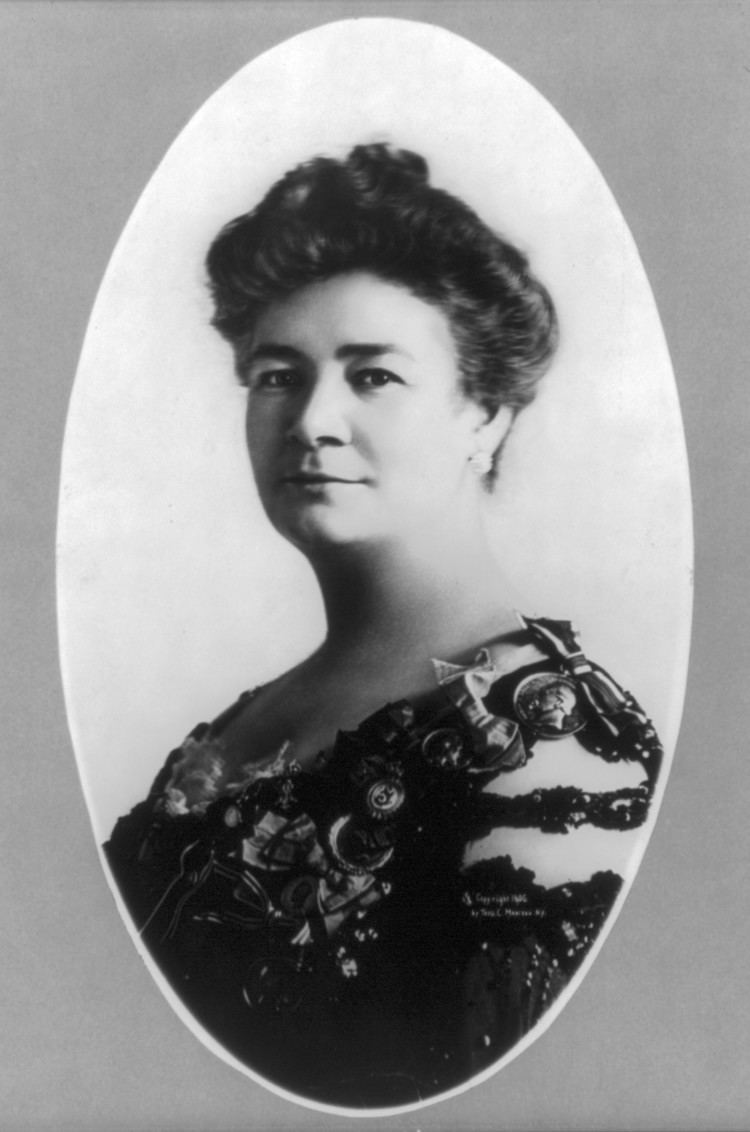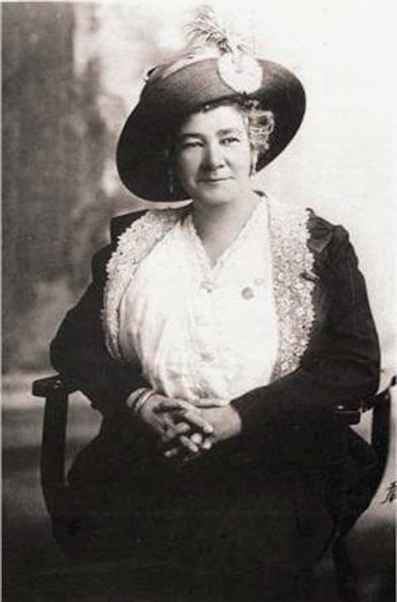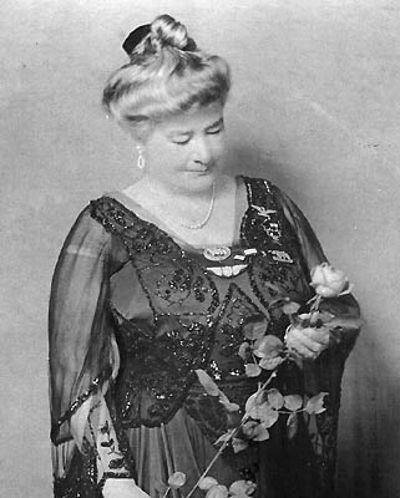Name Ernestine Schumann-Heink | Role Contralto | |
 | ||
Died November 17, 1936, Hollywood, California, United States Spouse George Rapp Jr (m. 1904–1914), Paul Schumann (m. 1893–1904), Ernest Heink (m. 1882–1893) Children Ferdinand Schumann-Heink, Walter Schumann, Henry Heink, George Washington Schumann, August Heink Parents Charlotte Goldman, Hans Rossler Similar People Richard Strauss, Enrico Caruso, Erich Kleiber | ||
Contralto ernestine schumann heink weihnachten 1927
Ernestine Schumann-Heink (15 June 1861 – 17 November 1936) was a German Bohemian, later American, operatic contralto. She was noted for the size, beauty, tonal richness, flexibility and wide range of her voice.
Contents
- Contralto ernestine schumann heink weihnachten 1927
- Great opera singers ernestine schumann heink stille nacht 1908
- Early life
- First marriage
- Second marriage
- International career
- Third marriage
- Charitable work and community support
- Later years
- Death
- References

Great opera singers ernestine schumann heink stille nacht 1908
Early life

She was born Ernestine Amalie Pauline Rössler to a German-speaking family in the town of Libeň (German: Lieben), Bohemia, Austrian Empire, which is now part of the city of Prague, Czech Republic. Her father, Hans Rössler, was a shoe maker; while previously serving as an Austrian cavalry officer, he had been stationed in northern Italy (then an Austrian protectorate), where he met and married Charlotte Goldman, with whom he returned to Libeň.

When Ernestine was three years old, the family moved to Verona. In 1866, at the outbreak of the Austro-Prussian War, the family moved to Prague, where she was schooled at the Ursuline Convent. At war's end, the Roesslers moved to Podgórze, now part of Kraków. The family moved again to Graz when Tini was thirteen. Here she met Marietta von LeClair, a retired opera singer, who agreed to give her voice lessons.

In 1877, Rössler made her first professional performance, in Beethoven's Ninth Symphony in Graz, appearing with soprano Maria Wilt, and her operatic debut at Dresden's Royal Opera House on 15 October 1878 as Azucena in Il trovatore.
First marriage
On January 11, 1883 in Dresden, Germany, she married Johann Georg Ernst Albert Heink (1854–1933), secretary of the Semperoper, the Saxon State Opera Dresden; this violated the terms of their contracts, and both had their employment abruptly terminated. Heink took a job at the local customs house and was soon transferred to Hamburg. Ernestine remained in Dresden to pursue her career, and eventually rejoined her husband when she secured a position at the Hamburg Opera. She went on to have four children with Heink. One of their children, Ferdinand Schumann-Heink (1893–1958) was a prolific, though mostly unbilled, Hollywood character actor. Other children were Hans Schumann-Heink, and Arthur Schumann-Heink.
Ernest Heink was again thrown out of work when Saxons were banned from government positions, and departed to Saxony to find work. Ernestine, pregnant, did not follow him; they were divorced in 1893. That same year she married actor Paul Schumann, with whom she had three more children. Her second marriage lasted until Paul Schumann's death in 1904. She came to the United States to make a brief foray into the Broadway theater, playing in Julian Edwards' operetta Love's Lottery, in which her performance was noted for the fact that she often broke off to ask the audience whether her English was good enough. She left the production after 50 performances and soon returned to opera.
Her breakthrough into leading roles was provided when prima donna Marie Goetze argued with the director of the Hamburg opera. He asked Ernestine to sing the title role of Carmen, without rehearsal, which she did to great acclaim. Goetze, in a fit of pique, cancelled out of the role of Fidès in Le prophète, to be performed the following night, and was again replaced by Ernestine. Schumann-Heink replaced Goetze as Ortrud in Lohengrin the following evening, one more time without rehearsal, and was offered a ten-year contract.
Second marriage
After the divorce from her first husband, she married Curt Paul Schuman around 1895. He died in 1904. While fighting a legal battle in Germany over her late husband's estate, she filed her United States naturalization papers on February 10, 1905, and became a citizen on March 3, 1908.
International career
She performed with Gustav Mahler at the Royal Opera House, Covent Garden, London, and became well known for her performances of the works of Richard Wagner at Bayreuth, singing at the Bayreuth Festivals from 1896 to 1914.
Schumann-Heink's first appearance at the Metropolitan Opera in New York City was in 1899, and performed regularly there until 1932. She recorded the first of her many musical "gramophone" performances in 1900. Several of these early sound recordings originally released on 78 RPM discs have been reissued on CD format and continue to impress due to Schumann-Heink's rich vocal tone quality and impressive musical technique.
Third marriage
On May 27, 1905 in Chicago, Illinois she married her manager William Rapp, Jr. She and her new husband lived on Grandview Avenue, North Caldwell, New Jersey in her "Villa Fides" from April 1906 to December 1911; she then moved to 500 acres (2 km²) of farm land located just outside San Diego, California (in an area then known as Helix Hill – now known as Mt. Helix – in Grossmont), purchased by her in January 1910, where she would live for most of her life. Her residence there still stands.
In 1909, she created the role of Klytaemnestra in the debut of Richard Strauss's Elektra, of which she said she had no high opinion, calling it "a fearful din". Strauss was not entirely captivated by Schumann-Heink either; according to one story, during rehearsals he admonished the orchestra, "Louder! I can still hear Madame Schumann-Heink!"
She separated from her husband on December 10, 1911. She filed for divorce in 1913. They divorced in 1914 and the appeals court upheld the lower court decision in 1915.
In 1915, she appeared as herself in the early documentary film Mabel and Fatty Viewing the World's Fair at San Francisco directed by Fatty Arbuckle, who also appears as himself in the film.
Charitable work and community support
While living at North Caldwell, New Jersey Schumann-Heink became interested in efforts to honor President Grover Cleveland. The future president was born in 1837 in nearby Caldwell, New Jersey, where his father, Rev. Richard Cleveland was minister of the First Presbyterian Church. On 10 September 1912, Schumann-Heink performed a benefit concert at the church to raise money to purchase the adjacent Presbyterian Manse, Cleveland's birthplace. In 1913, the Grover Cleveland Birthplace Memorial Association (GCBMA) purchased the Manse and opened it to the public as a museum. Mme. Schumann-Heink became the first lifetime member of the GCBMA.
During World War I, Schumann-Heink supported the United States and its armed forces. She entertained the troops and raised money to help wounded veterans. She toured the United States raising money for the war effort, although she had relatives fighting on both sides of the war – including her sons August Heink, a merchant sailor who had been impressed into the German submarine service, Walter Schumann, Henry Heink and George Washington Schumann, all in the United States Navy.
Later years
In 1926, she first sang Silent Night (in both German and English) over the radio for Christmas. This became a Christmas tradition with US radio listeners through Christmas of 1935. In 1927, she performed in an early Vitaphone sound short film, possibly the only surviving footage of her singing. She lost most of her assets in the Wall Street Crash of 1929 and was forced to sing again at age 69.
Her last performance at the Met was in 1932 performing Erda in Der Ring des Nibelungen, aged 71. In her later years, she had a weekly radio program. In the movies of the 1930s, many a buxom opera singer/instructor/matron was modeled on her; see for instance 1937's Stage Door.
Death
Schumann-Heink died at 7:21 P.M. on 17 November 1936, aged 75, of leukemia in Hollywood, California. Her funeral was conducted by the American Legion at the Hollywood Post Auditorium, and her remains were interred at Greenwood Memorial Park in San Diego. Her archive went to the Smithsonian Institution.
